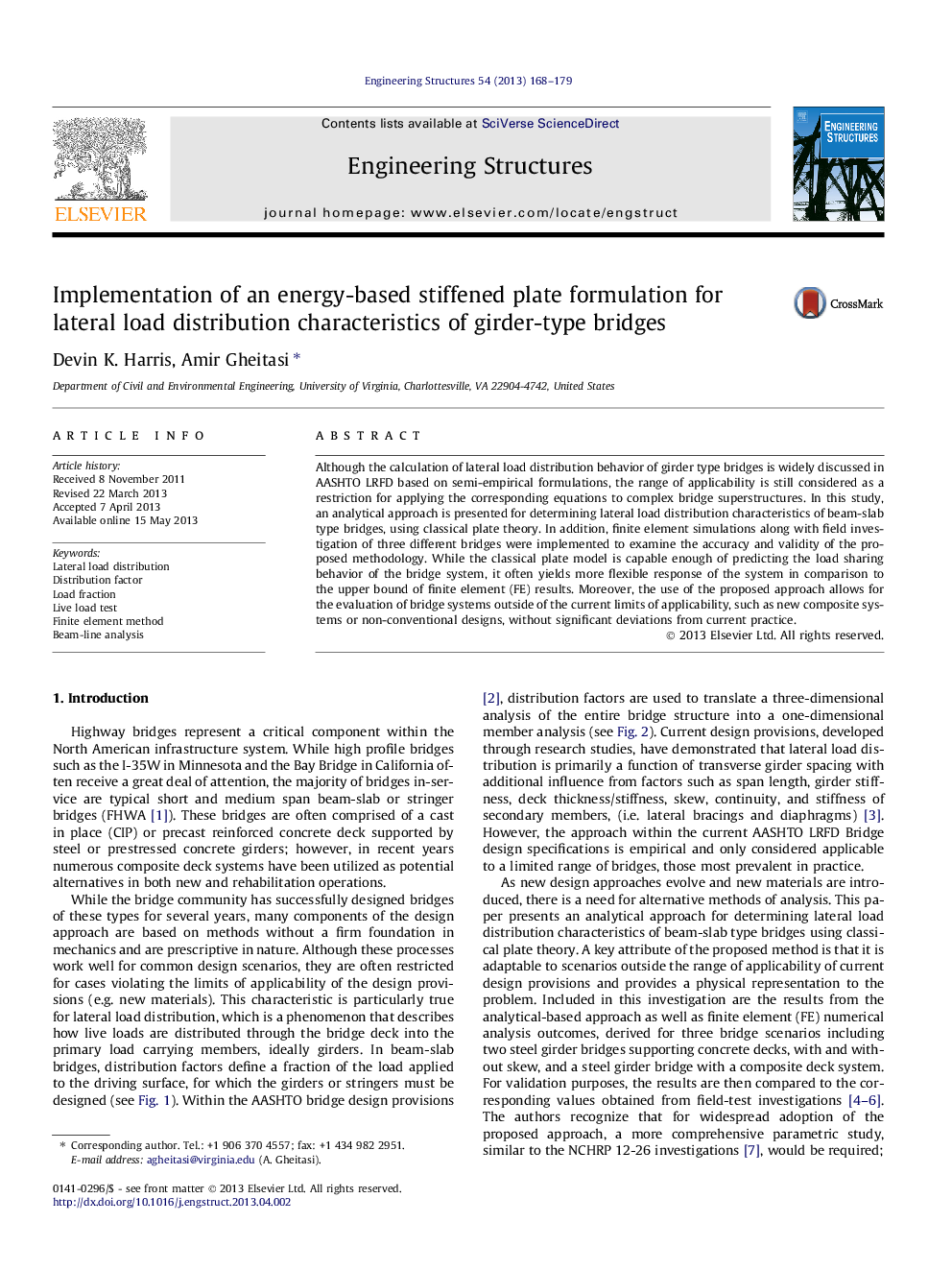| Article ID | Journal | Published Year | Pages | File Type |
|---|---|---|---|---|
| 267033 | Engineering Structures | 2013 | 12 Pages |
•A stiffened plate methodology was presented for evaluating lateral load distribution behavior of bridges.•It can be applied to bridge systems outside the range of applicability of existing design specifications.•The proposed methodology correlated well with both field measured and finite element results.
Although the calculation of lateral load distribution behavior of girder type bridges is widely discussed in AASHTO LRFD based on semi-empirical formulations, the range of applicability is still considered as a restriction for applying the corresponding equations to complex bridge superstructures. In this study, an analytical approach is presented for determining lateral load distribution characteristics of beam-slab type bridges, using classical plate theory. In addition, finite element simulations along with field investigation of three different bridges were implemented to examine the accuracy and validity of the proposed methodology. While the classical plate model is capable enough of predicting the load sharing behavior of the bridge system, it often yields more flexible response of the system in comparison to the upper bound of finite element (FE) results. Moreover, the use of the proposed approach allows for the evaluation of bridge systems outside of the current limits of applicability, such as new composite systems or non-conventional designs, without significant deviations from current practice.
